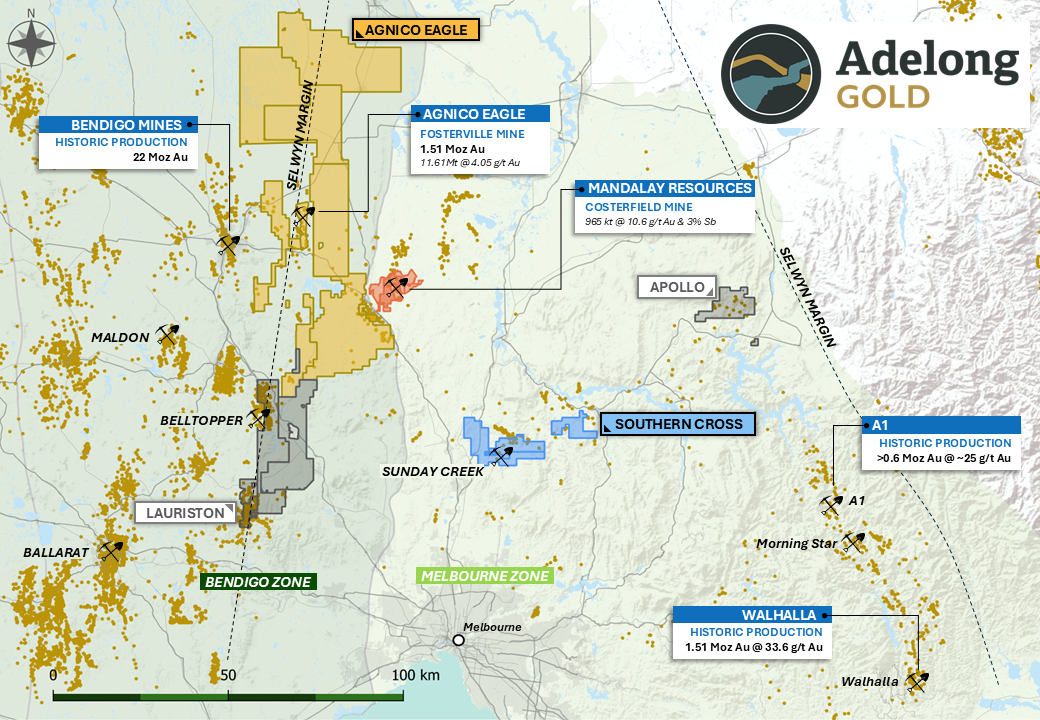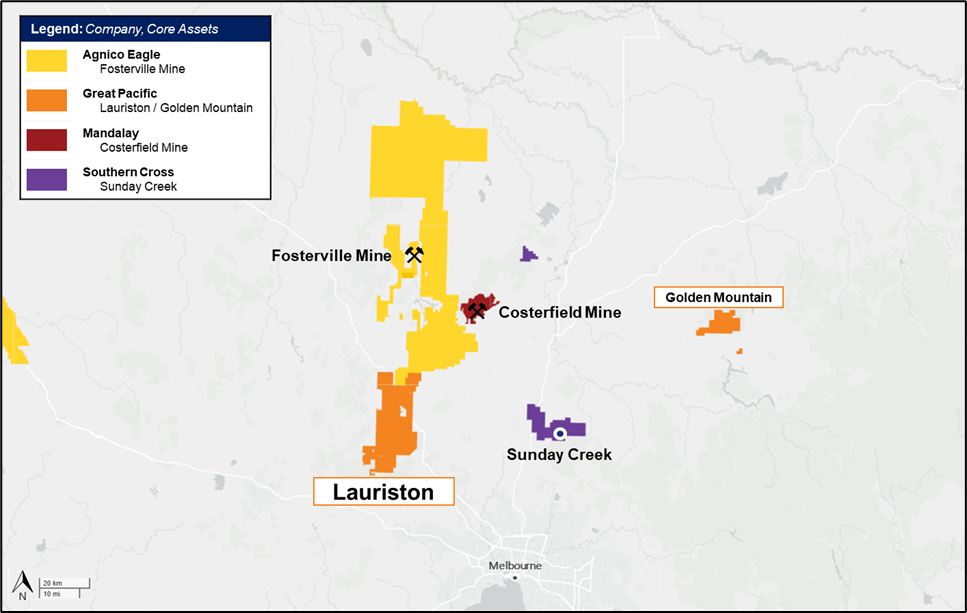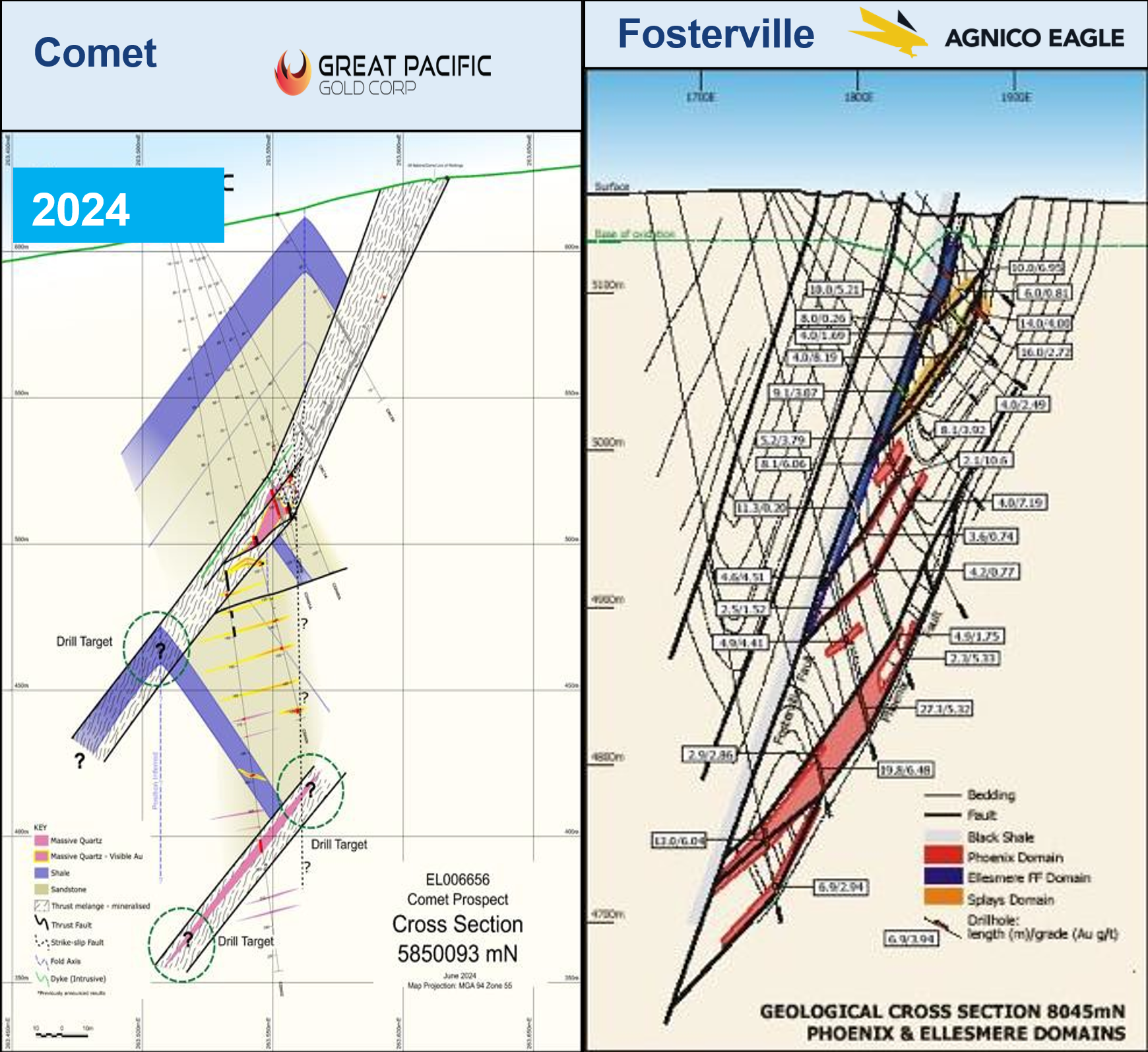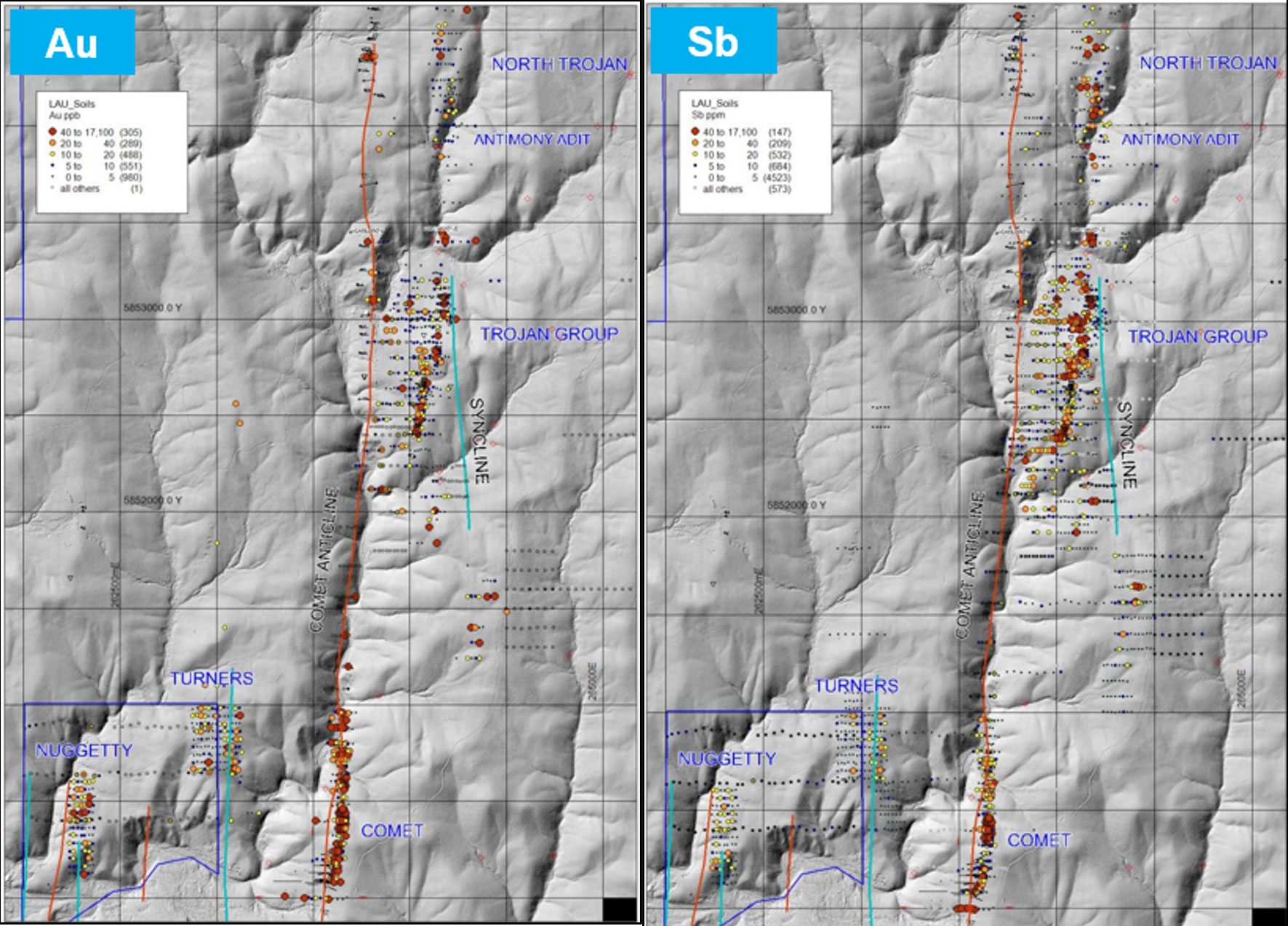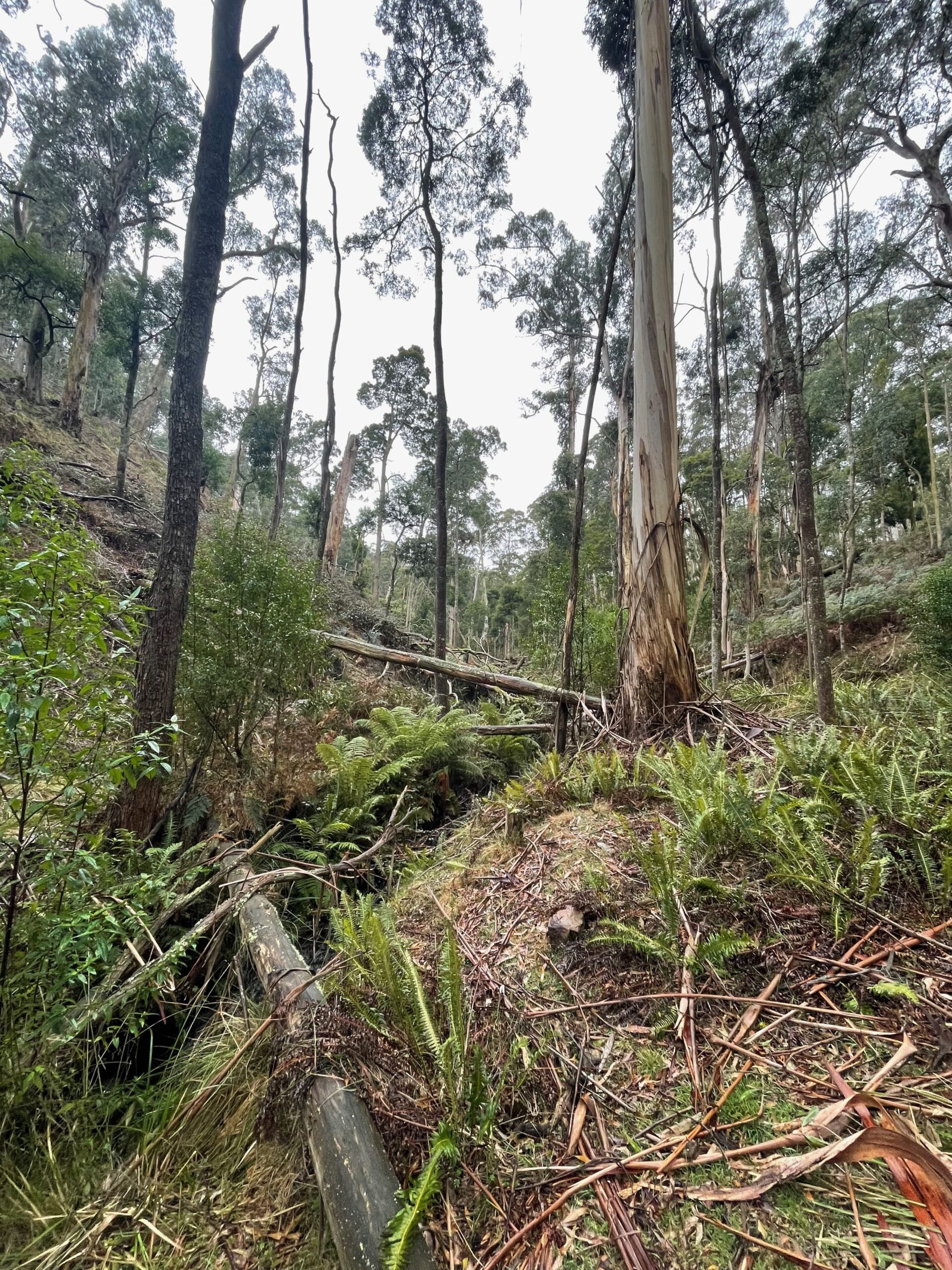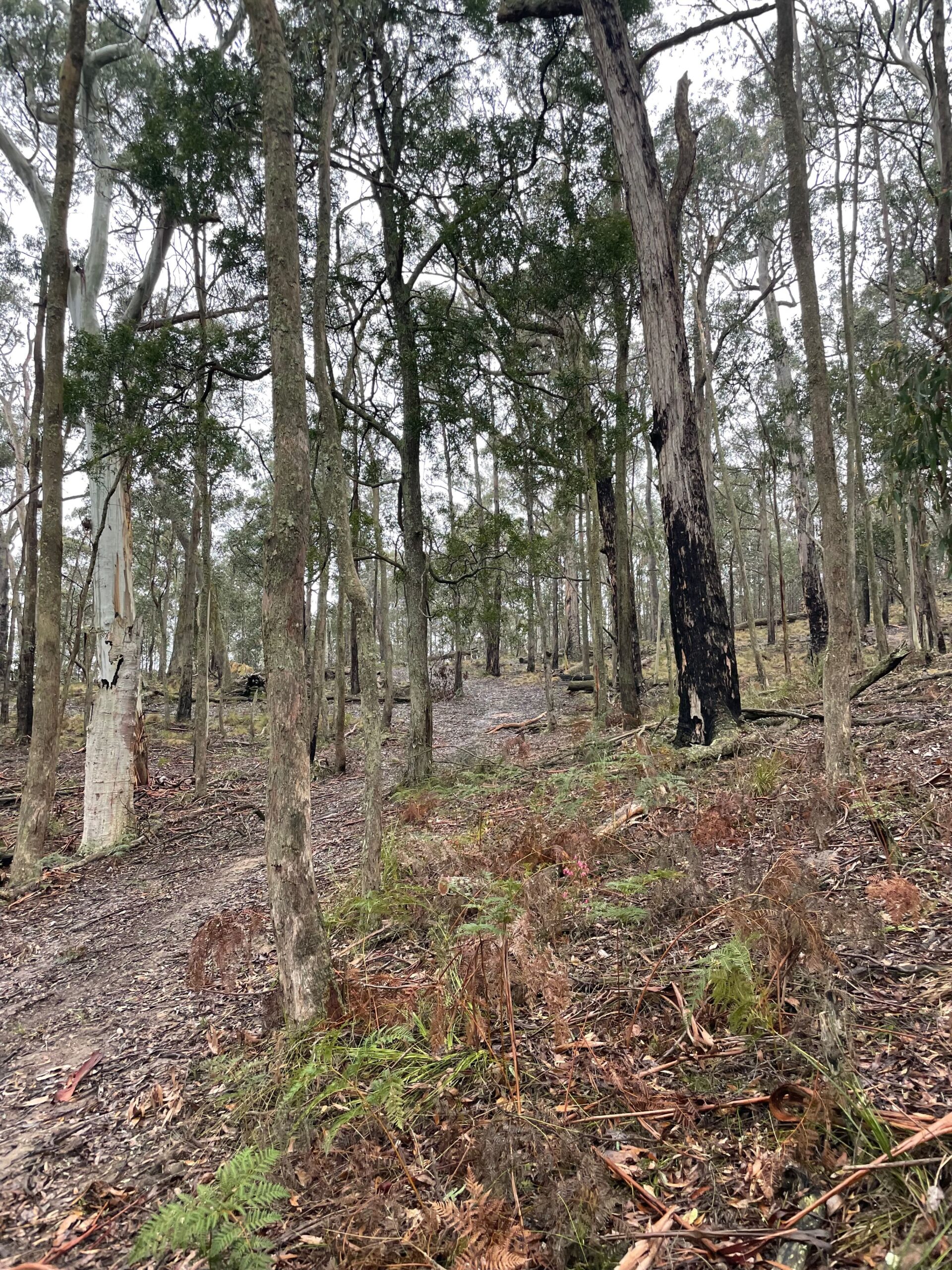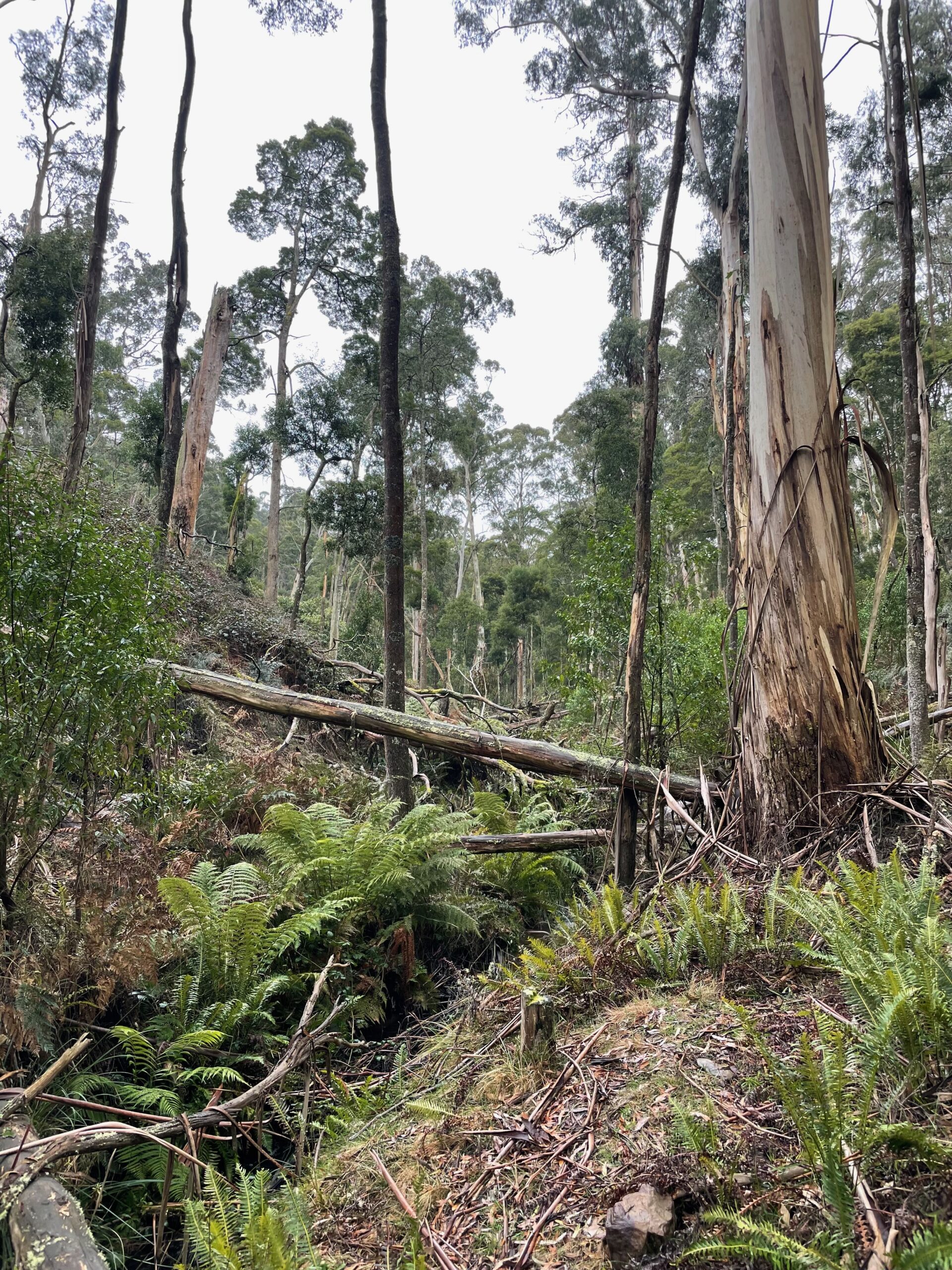The Lauriston Project comprises a 28,700-hectare landholding within Victoria’s highly productive Bendigo Zone, immediately adjacent to Agnico Eagle’s Fosterville Mine. The Lauriston Project spans six exploration licences EL5479, EL6656, EL7044, EL7045, EL7048 and EL8054.
Geological Setting & Exploration Potential
- Lauriston is hosted within the same Ordovician sedimentary rocks of the Selwyn Block as Fosterville and shares key structural, geological, and mineralisation features.
- Gold mineralisation is of the epizonal gold-antimony (Au-As-Sb) type, formed under shallow crustal conditions at ~200°C ± 50°C, similar to Fosterville’s Swan Zone.[1]
- The Lauriston Project lies within the Fosterville Sub-Domain, west of the Heathcote–Mount William Fault Zone, and is interpreted to have formed during the same regional Bindian and Tabberabberan orogenies that controlled gold deposition at Fosterville.
- The Comet mineralisation is hosted within the Comet Anticline and associated west-dipping Comet Fault Zone, a structural setting highly analogous to the Fosterville Fault hosting the Swan Zone.
- Drilling has confirmed multiple stacked zones of auriferous quartz veining beneath the main fault, offering compelling potential for depth extensions and repeat lodes.
[1] The presence of mineralisation and exploration results at the Fosterville Project do not guarantee, and should not be construed as indicative of, similar mineralisation or results at the Lauriston Project.
High-Grade Gold Results
- The Lauriston Project includes the Comet discovery, where recent drilling intersected outstanding high-grade mineralisation, including:
- 8.0m at 104 g/t Au from 95m in hole CRC07 (including 2.0m at 413 g/t Au)[2]
- 9.0m at 11.6 g/t Au from 97m in hole CDH01A (including 4.0m at 25.1 g/t Au)[3]
- 5.9m at 15.4 g/t Au from 101.9m in hole CDH10 (including 4.0m at 22.5 g/t Au)[4]
- Recent detailed soil geochemistry has outlined a >4.5km long gold-antimony trend linking the Comet and Trojan prospects, suggesting district-scale mineralisation potential similar to that seen at Fosterville.
- The tenements are subject to an Indigenous Land Use Agreement (ILUA) with the Dja Dja Wurrung Clans Aboriginal Corporation, and several compensation/access agreements.
- Historical mining at Lauriston produced approximately 233,000 ounces at an exceptional average grade of 20.7 g/t Au from shallow depths, highlighting the fertility of the system. Despite its exceptional address, Lauriston has seen limited modern exploration, providing a significant opportunity to unlock value through systematic drilling.
[1] The presence of mineralisation and exploration results at the Fosterville Project do not guarantee, and should not be construed as indicative of, similar mineralisation or results at the Lauriston Project.
[2] See TSXV Release – 11 January 2024
[3]See TSXV Release – 21 March 2024
[4]See TSXV Release 21 June 2024
Figure 3: Vertical cross-section comparisons showing similar stacked mineralisation geometries between Comet and Fosterville (Source: Great Pacific Gold).
Figure 4: Plan view showing gold and antimony soil anomalies extending along a +4.5km trend across Comet and Trojan prospects (Source: Great Pacific Gold).


